Learning How to Dilute Essential Oils
Properly diluting essential oils is one of the most important things to learn about before diving into blending, internal use, or DIY recipes. The concentration and potency of EOs can be too powerful if used directly on the skin, so it’s a good idea to familiarize yourself with a few simple dilution recommendations.
Carrier Oils
The easiest way to dilute essential oils is by using a carrier oil or a solution that contains fat like dairy milk, plant milk, etc. The reason for this is because oils mix well with other oils making it easy to disperse EOs throughout solutions without separating. Mixing with dairy (often used for internal use) will allow the essential oils to blend well enough for more comfortable digestion.
Using carrier oils to dilute essential oils provides a great medium for absorption into the skin and is one my favorite ways to use them.
There are many different carrier oils to choose from like sweet almond oil, avocado oil, hemp seed oil, coconut oil, sesame oil, and grapeseed oil to name a few. One of my favorites, especially for high potency therapeutic use, is emu oil because it is the most transdermal carrier oil available. Just make sure you are sourcing this oil from sustainable companies who treat their emus with care!
Choosing a carrier oil depends on what you’re looking for as far as skin type and the feel you’re going for. Heavier oils are better during the dry winter months and make recipes for this time of year more effective because they stay on the skin. Lighter oils may be best for people with acne prone skin or for use under clothing because they are less greasy.
Experiment and see what works best for your needs. You can read about over 80 different carrier oils HERE.
Recommended Dilution Ratios
Since essential oils are very strong, it is most often recommended that the EO content of any finished product only account for 1-2% of the total blend. To make this easier to envision we will use a 1oz size of carrier oil as an example which will make it very easy to convert into larger or smaller batches as needed. You can get 1oz size bottles here.
1% Dilution
There are 30ml in 1oz of carrier oil which equals 600 drops total. 1% of 600= 6. For 1oz of carrier oil you would add 6 drops of essential oil for a 1% dilution. Make sense? I hope so!
2% Dilution
Using the same method as above: 30ml= 1oz= 600 drops total. 2% of 600= 12. For 1oz of carrier oil you would add 12 drops of essential oil for a 2% dilution.
3% dilution would be 18 drops of EO for every 1oz of carrier oil, 5% would be 30 drops of EO, 10% would be 60 drops of EO, and so on. If you need help just ask me in the comments how to dilute essential oils for the amount you are working with 🙂
How to Dilute Essential Oils Based on Age
The dilution ratios used for adults is different for children, pregnant and nursing mothers, and the elderly so it’s very important to know what potency is safe. How much dilution is required also depends on what you’re trying to achieve like treating colds, chronic conditions, or for making preventative remedies, etc.
The ratios discussed below are intended to be a very general guideline and does not take into account essential oils that require dilutions below .25% (which I will be writing about shortly).
I recommend using the lowest dilution first to see how a blend works out for you before exploring stronger formulas.
.25% Dilution
Ages 6 months-6 years
For a .25% dilution mix 1 drop of essential oil with 4 teaspoons of carrier oil.
For use in children younger than 6 months old please consult with a certified aromatherapist. Use essential oils with care in children 2 years and younger.
1% Dilution
Ages 6+, pregnant women, the elderly, and those with sensitive skin, serious health issues, and compromised immune systems.
For a 1% dilution mix 1 drop of essential oil with 1 teaspoon of carrier oil or 6 drops of EO in 1oz of carrier oil.
This dilution works well when applying essential oils to a large area of the body.
2% Dilution
Ideal for most adults and can be used for most situations including daily skincare routines except during pregnancy or nursing.
For a 2% dilution mix 2 drops of essential oil with 1 teaspoon of carrier oil or 12 drops of EO in 1oz of carrier oil as mentioned above.
3% Dilution- 10% Dilution
A suitable dilution for most adults and can be used for most situations except during pregnancy or nursing.
This dilution ratio is best for short term therapeutic use when treating muscle injuries, respiratory conditions, or colds and flus. Using up to 10% dilution is generally safe with consideration of the age, health of the person being treated, and the essential oils used.
To make a 3% dilution mix 3 drops of essential oil with 1 teaspoon of carrier oil. For 10% dilution mix 10 drops of essential oil with 1 teaspoon of carrier oil.
25% Dilution
Used in healthy adults for the therapeutic treatment of severe pain, muscle cramps, or severe bruising, etc. This dilution is used for a very short amount of time that largely depends on the essential oils used and is not recommended during pregnancy or nursing.
To make a 25% dilution mix 25 drops of essential oil with 1 teaspoon of carrier oil.
Use with caution! Before I knew anything about EOs I blindly followed a recipe I found online for varicose veins and ended up with a bad rash after mixing a 25% dilution of lemongrass essential oil with 1 teaspoon of carrier oil. THIS IS A VERY BAD IDEA!
Make sure to do research before using higher-concentration recipes!
“Neat”- No Dilution
I typically do not use essential oils undiluted because I have very sensitive skin and react poorly to concentrated solutions of any kind. Unless you are under the care of a certified aromatherapist I recommend sticking to diluted applications of essential oils.
Nowadays, people often believe in “the stronger the better” but this is not always the case with essential oils. Even 3% dilutions which is considered the lowest therapeutic dilution for adults, is more than adequate for treating a variety of different conditions effectively.
The main concern associated with using essential oils neat is the real possibility for phototoxicity, burns, irritation, and sensitization which is a negative and painful reaction to an essential oil that is often permanent or takes years to overcome.
How to Dilute Essential Oils for Different Applications
Aside from mixing essential oils in carrier oil for therapeutic use there are other ways you can enjoy and use EOs.
Serums, Lotions, and Creams
Depending on the serum, you would typically use a .5-2.5% dilution (depending on skin sensitivity) which would be 3-15 drops of essential oil per ounce.
For serums and creams that treat wounds, scars, severe acne, and other conditions that may require a higher concentration of oils, I have used up to a 12% dilution.
For anti-aging, hydration, and balance of the skin you would typically use a 2% dilution depending on the essential oils in your formula.
Baths
When you want to relax, soothe sore muscles, increase circulation, or ease fatigue a bath with essential oils is just what you need! Depending on the oils used, you can add 2-12 drops of essential oil mixed in epsom salts, carrier oil, honey, or milk and add them to running bath water.
Steam Inhalation
For congestion in the lungs or sinuses add 3-7 drops of clarifying essential oils to a bowl of boiling water and carefully hold your face above it (don’t burn yourself!) with a towel over your head.
For relaxation add 1-3 drops of lavender or any other relaxing essential oil.
Room Sprays
Room sprays or aromatic spritzers are typically a 2-3% dilution. Do this by combining 12-15 drops of essential oil to every 1oz of water. Shake well and spray onto linens, bath towels, or just around a room for a snapshot of fragrance whenever you need it.
Learn how to make a calming room spray here.
Room sprays are popular for freshening the air and instilling positive emotions.
Diffusing
You would of course want to follow the instructions that come with your diffuser, but typically you would use a 1-3% dilution in a diffuser depending on the essential oils used.
Diffusers are great mood enhancers and help with sleep, stress, anxiety, mental clarity, and a whole bunch of other useful things. Be sure to check out my guide on awesome essential oils diffusers here.
Inhalation
There are many ways to inhale essential oils like:
• Palm inhalation- you only need one drop of essential oil rubbed between your palms like peppermint or eucalyptus. Often used for immunity
• Directly from the bottle- breathe in slowly and deeply for 3 breaths. Often used for emotional support
• Salt inhalers- add 1-3 drops of essential oil to the salts and use as directed for 15-20 minutes a day. Often used for respiratory conditions. Learn about the benefits of salt inhalers here. This is my favorite salt in haler
• Inhaler tubes- add a few drops of essential oil to the cotton pad inside and breathe in slowly and deeply for 3 breaths. Some of the most popular essential oils for this method are peppermint, eucalyptus, and other clarifying oils. Inhaler tubes are often used for respiratory conditions, nausea, and mental clarity
As a final note on how to dilute essential oils always begin with the less is more mindset. Essential oils are very powerful and extremely potent and require care and respect while using them. I hope this guide was helpful and you've learned how to dilute essential oils!

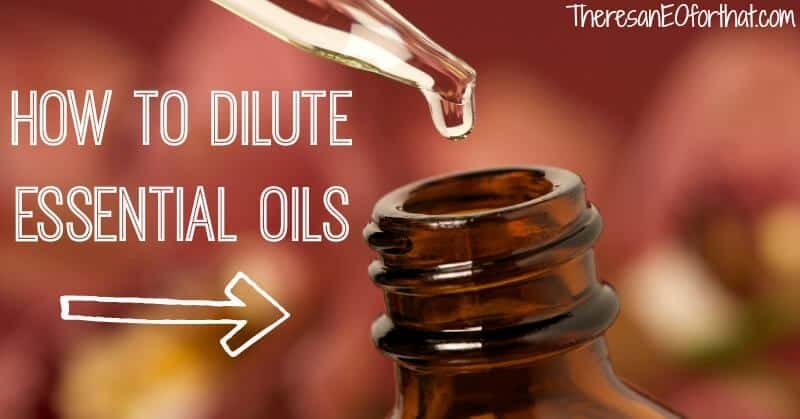
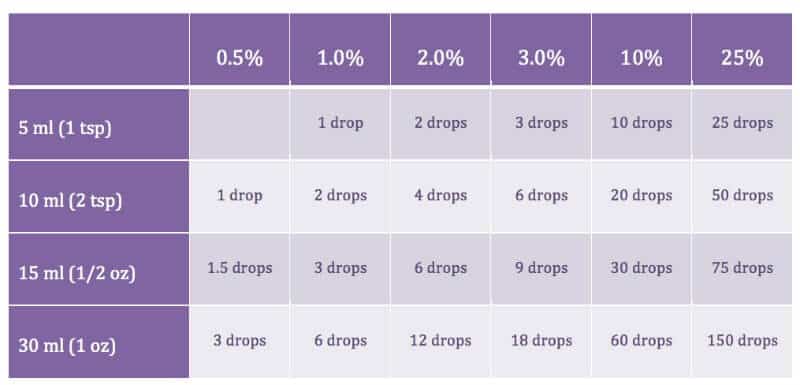
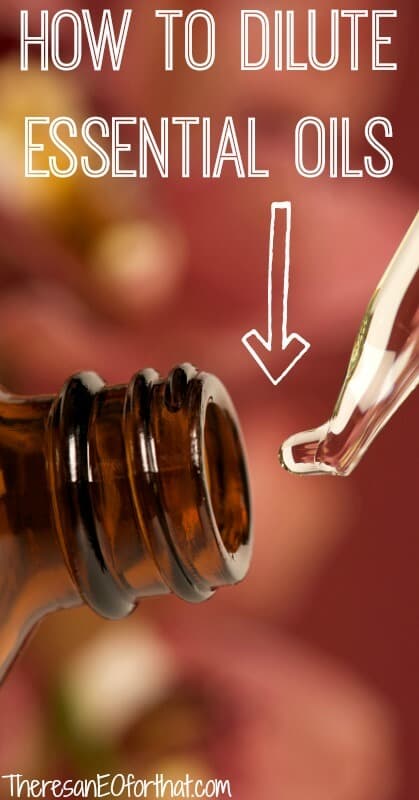
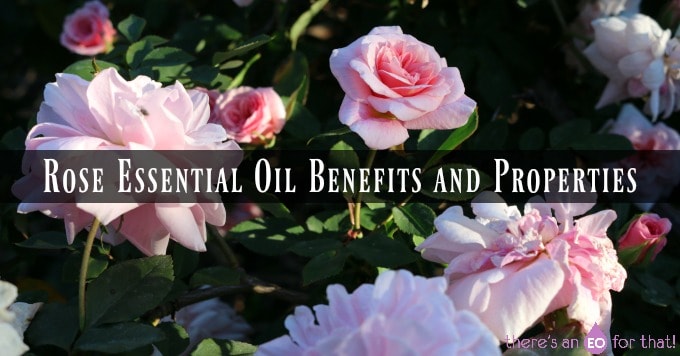
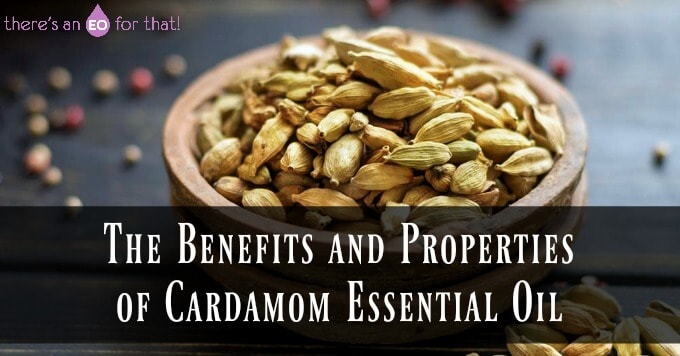
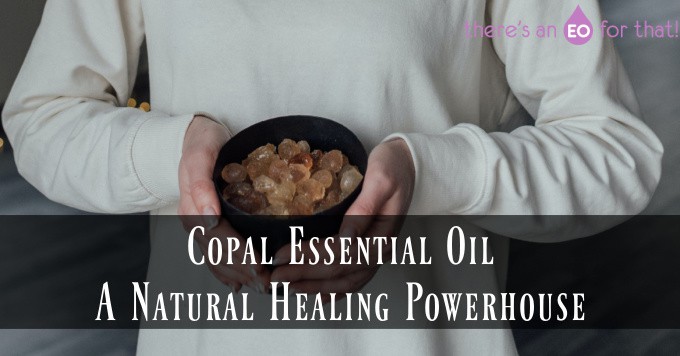
Dave says
I would like to make a sesame oil carrier with rose-geranium essential oil for a nasal treatment. What should the % be and drops for 1 oz. I read elsewhere 5-8%.
Meetali Meshram says
Hello, I want to make a clove oil plus sesame oil blend for oil pulling, could you please help me the quantity of sesame oil to take to blend with 30ml of clove oil...
Tash says
Just add 1 drop of clove essential oil to 30ml of se4same oil 🙂
Bash says
Hiiii,
I think I made a huge mistake with my dosage. I used 100 drops of 6 different essential oils. That's a whole bottle and I honestly never intended to use that much. However, I used 34 ounces of carrier oil. Please advise. Is this o.k. This batch of butters smell so awesome.
Hannah says
Hi there! I had a read but I’m clueless, I’m wanting to make perfume. I want to make big batches but I’ll give 2 as an example now. 16oz fractionated coconut oil is what I’ll have (can buy more) and Im wanting to use to put in multiple 10ml rollers AND 30ml spray bottles using lavender, vanilla and ylang ylang EO. That’s one perfume scent and the other is just grapefruit and ylang ylang EO. How many drops do I use for a big bath of both and how much carrier oil do I use?
Jessica @FitnessEquipmentsLab says
Hello Tash, Thank you for this beautiful article about essential oils.
Mel says
Hi! Thank you for a very detailed post! Specially about the dilution of EO to carrier oil. However, I’m a bit lost. I’m re-purposing my previous 25ml vanilla extract bottle. I’m planning to use it for reed diffuser. I’ve previously made a mixture, but somehow, I can’t smell anything.
I’ve filled up half of the (25ml) bottle with grapeseed oil then added 20 drops each of ruby grapefruit, blood orange and bergamot. Would really be great if you can help me. Thanks!
Tash says
Hi, Mel!
Citrus oils tend to lose their scent much more quickly than non-cold pressed oils. You may need to add other essential oils to help prolong the staying power of the citrus oils you chose. You can read more about blending essential oils here:
Rose says
I plan to dillute a 4 oz (118 ml) jojoba oil (which is the carrier oil)
with rosemary essiental oil i dunno the amount of drops i should mix with the entire 4oz/118ml jojoba oil
I’d appreciate it if you respond soon
Catherine Williams says
I want to make a big batch of Eucalyptus and Grapeseed Oil as I use daily and often for chronic pain/nerve pain. I cannot figure out how much to use of the Eucalyptus .5 with 16 ounces of Grapeseed oil, can you help please?
Thank You
Tash says
You can use 96 drops of eucalyptus oil which will make a 1% dilution.
Lishia says
I'm making a hair oil with EO in it. I'll have a few differcarrier oils but what %dilution would you suggest for a scalp oil?
Tash says
A 2% dilution would be fine 🙂
Luis Lopez says
Was looking for a scalp dilution using rosemary oil and olive oil and than I saw that 2% would be fine. Just want to say Thank you so much.
Debbie Cellini says
What does it mean when the EO says to dilute 10x1? I'm confused. Also where would I apply a Slim EO?
Thank you
Lizz says
thank you so much for all of this essential information on essential oils for children. It is nice that people care out there and want to keep our babies safe. you are very informative. God bless you for your generosity in sharing your information. I am a Doterra distributor but I use it for my family for their health needs and do not sell. so thank you so very much.
RABIATUL IZZATI says
I wanna make a sinus inhaler stick by blending cinnamon, tea tree and clove. Would you recommend me the percentage of these EO?
Tash says
Honestly, I would just add one drop of each to the cotton pad and see how that feels when you inhale it. If you want it stronger, only add one more drop of each at a time.
Jessica says
So in all carrier oils should be added more than essential oils when mixing them?
Tash says
Yes! 🙂
Hally says
If diluting 2 oils together, cut the recipe in half for each?
E.g., in a 10 mL roller, I should put 6 drops of EO in my carrier oil, for a 2% dilution. So, 3 drops each if it's 2 oils mixed together?
Tash says
Yes! 🙂
Nurul husna says
Hi !
How much % or ml of peppermint oil should I use in 100ml (carrier oil + active ingredients) ??
Im working with serum,
Glad if you can help me
Tash says
Hi Nurul!
The max number of drops you can use is 30 drops per 30ml but I would use a lot less for a serum. I would start with just a few drops and see how it feels on the skin.
Chris Hendricks says
Hi Tash,
I’m planning on ordering essential oils and carrier oils to make a therapeutic massage oil with. I don’t know how to dilute the essential oils though. I plan on using 16 oz of coconut oil and 16 oz of sweet almond oil. The essential oils I’m going to use are lavender, eucalyptus, rose hip, and chamomile. What is the best ratio and how many drops each should I use for such an application?
Karrie Cropper says
I could use help mixing my peppermint oil with extra virgin olive oil in a roll on container which is 10ml (.33oz)
Tash says
Hi Karrie!
I would add just 2 drops of peppermint 🙂 Add the olive oil to the shoulder of the 10ml roll-on then add the peppermint. cap closed and roll between your palms to mix. That's it!
Riya Vaghela says
Hi
I think for me 2% dilution is safe. But I'm not aware about the proportions of the essential oils. The carrier oil that I have is jojoba (30ml- 1oz) and two essential oils (tea tree and lavender). So should I take 6 drops of each in the carrier oil to apply on my skin?
Tash says
Hi Riya!
Yes! You can mix 6 drops of each oil in 1oz of carrier to make a 2% dilution 🙂
Arunkumar says
Hi, generally what ratio you suggest for massage oil
Tash says
It depends on the essential oils used! I usually aim for a 1-2% dilution 🙂 You can learn more here.
Andrea says
I was wanting to make a blend with lavander, vetiver and ylang ylang, for adults in a 10 ml roller. how many drops of each EO oils i have to use?thank you
Tash says
Hi Andrea!
Use 1 drop ylang ylang, 2 drops lavender, and 3 drops vetiver. This will give you a 1% dilution. You can double the drops except for ylang ylang for a 2% dilution if desired. 🙂
Bella Hardy @ Healthnerdy says
I am so glad that I found this helpful post on Pinterest, great to learn more about oils. Essential oils became a part of my daily life.
Robin Hamilton @Wellness Wires says
I'm sleep-deprived and sometimes stressed. Essential oils helped me with that, I love essential oils and use them daily.
Theresa says
Hi I was wanting to make thieves from a recipe one for my grandkids one for elderly and one for adults in a 10 ml roller how does it break down with so many EO oils can you help me?
Tash says
Hi Theresa!
If you are going with a traditional mix of EOs for thieves which contains eucalyptus, peppermint, and rosemary it is only suitable for children 10 years and older. For younger children (6 months and older), you can use a thieves blend WITHOUT peppermint, rosemary, clove, and eucalyptus. How old are your grandkids? That will make it easier for me to let you know which oils are safe to use for their age 🙂 and typically for the elderly and for children, it's safest to go with a 1% dilution which would be a total of 2-3 drops of essential oil. For such a small amount of EO, I always recommend mixing your pure essential oils first and THEN adding 2-3 drops of that blend to your 10ml roll-on. For healthy adults, it would be a 2% dilution, roughly 4 drops of thieves essential oil.
karen says
I am confused as to why you are saying above that we can not use theives oils in a roller for kids. In you own article on this site you state the following: There is a lot of controversy surrounding the use of eucalyptus, rosemary, and peppermint essential oil in children under 10 years of age. Even Tisserand (leading oil expert) himself has said for children under 3:
"Eucalyptus globulus and radiata can be diffused (1-2 drops) and applied topically at a concentration of 0.5% (2 drops in 4 teaspoons carrier oil).
I believe these guidelines are super-safe, if anything a little over-cautious. If you’re wondering about other types of eucalyptus oil, E. citriodora is safe for young kids, though is less likely to be therapeutic, and the safety of E. dives is uncertain.
In children 3-6 he states that peppermint can be diffused with care (two drops of essential oil total) and applied topically at a concentration of .5% (2 drops of essential oil in 4 tsp of carrier oil).
For eucalyptus (globulus and radiata), he recommends a maximum of 1% dilution (4 drops in 4 tsp of carrier oil) for children 3-6 years of age.
Tash says
Hi Karen!
Sorry for the confusion! I think it's best for parents to choose on their own whether or not they feel safe using certain essential oils on their children. There are so many people on opposite sides of this argument that it's hard to know what's actually right. I personally do trust Tisserand, but have realized over the years that people with use essential oils without thinking about possible reactions. That's why in most of my articles I will say not to use eucalyptus, rosemary, and peppermint on their kids until 10 years of age. It's just safer for everyone in my opinion, but I DID want to share Tisserands thoughts.